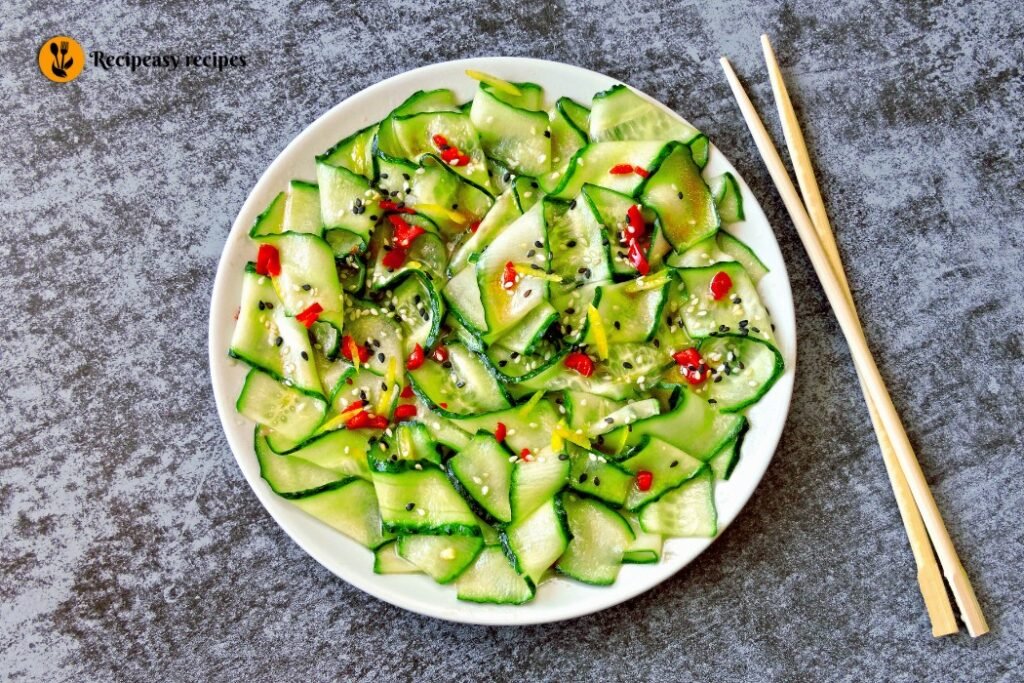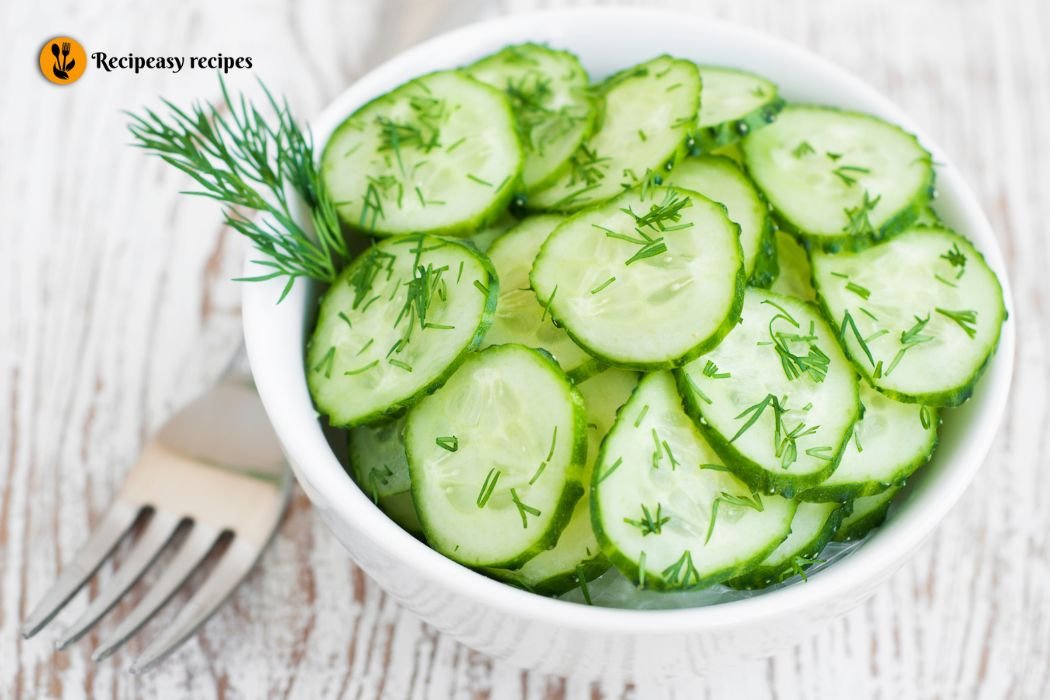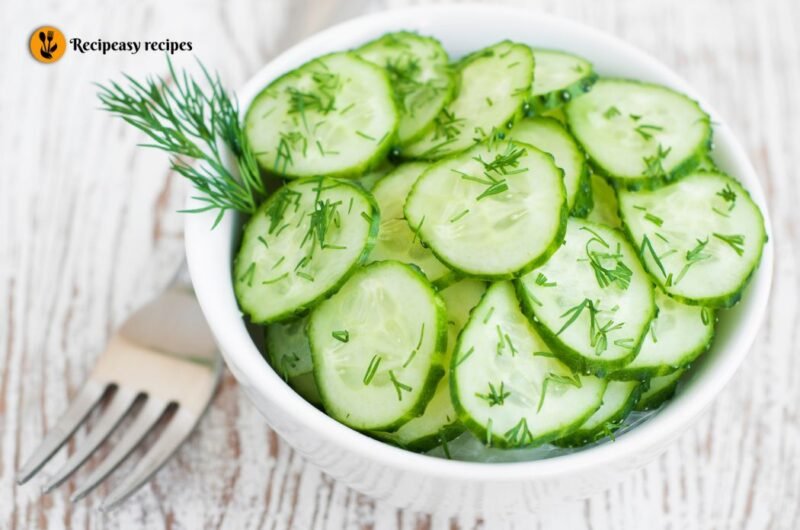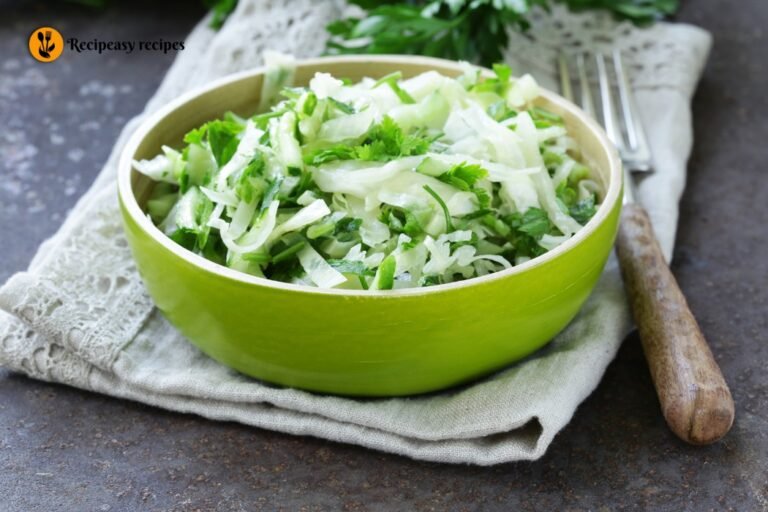Armenian Cucumber Recipe | Refreshing Summer Salad
If you’re looking to add something refreshing, crisp, and healthy to your summer meals, then this Armenian cucumber recipe is exactly what you need. Known for its unique flavor, ridged skin, and crunchy texture, the Armenian cucumber is not just a versatile ingredient in the kitchen, but also packed with nutrition. Whether you’re planning a quick salad, a tangy pickle, or just a chilled snack, this recipe brings a delightful twist to your regular routine.
A Short History of Armenian Cucumber
The Armenian cucumber isn’t technically a cucumber. It belongs to the melon family but looks and tastes just like cucumber only better. With its roots tracing back to ancient Persia and Armenia, this vegetable has been cherished for centuries in Middle Eastern, Mediterranean, and Asian cuisines. Traditionally known as “yard-long cucumber” or “snake cucumber,” it’s prized for its length, mild taste, and incredible hydration benefits.
It’s now grown in various parts of the world and is becoming a favorite among home cooks for its unique shape and refreshing taste.
Crisp Simplicity: How to Make Armenian Cucumber
Making the perfect Armenian cucumber recipe is all about using fresh ingredients and enhancing their natural flavors. Here’s a step-by-step breakdown that will bring out the best in this unique cucumber.

1). Ingredients:
- 2 large Armenian cucumbers
- 2 tbsp fresh lemon juice
- 1 tsp sea salt
- 1 tbsp extra virgin olive oil
- 1 clove garlic, finely chopped (optional)
- A pinch of black pepper
- Chopped fresh herbs (like mint, dill, or parsley) for garnish
2). Instructions:
- Wash the Armenian cucumbers thoroughly. You can peel them if you prefer, but the skin is thin and edible.
- Slice them into thin rounds or half-moons depending on your preference.
- In a bowl, mix the lemon juice, olive oil, garlic, salt, and pepper.
- Add the cucumber slices and toss gently until coated evenly.
- Let it sit for 5–10 minutes to absorb flavors.
- Garnish with fresh herbs and serve chilled.
It’s that easy! Now you know exactly how to make Armenian cucumber in a simple and delicious way.
3). Zesty & Tangy: Armenian Cucumber with Lemon
One of the most popular combinations you’ll find is Armenian cucumber with lemon. The lemon adds a refreshing zing that balances the mild sweetness of the cucumber perfectly. It also acts as a natural preservative and gives the dish a bright, citrusy aroma.
For a variation, add a few slices of red onion or cherry tomatoes to the salad. This adds both color and depth to the flavor, making your cucumber dish not just tasty but also visually appealing.
Fresh & Powerful: Armenian Cucumber Benefits
Why should you add Armenian cucumber to your diet? There are several compelling reasons:
- Hydration Hero: With over 90% water content, it’s perfect for hydration during hot weather.
- Rich in Nutrients: A good source of vitamins A, C, and potassium.
- Supports Digestion: The fiber helps improve digestive health and keeps things moving.
- Low in Calories: A great choice for weight watchers it’s filling yet low in calories.
- Skin Friendly: High water content and antioxidants support glowing skin.
In short, when someone asks, “Are Armenian cucumbers good for you?” the answer is a big yes!

Essential Guide: Ingredients of Armenian Cucumber
If you want to experiment with this recipe or add variations, knowing the ingredients of Armenian cucumber dishes is helpful. Most versions include:
- Freshly sliced Armenian cucumber
- Acids like lemon juice or vinegar
- Healthy fats like olive oil
- Salt & pepper
- Fresh herbs for aroma and garnish
- Optional: yogurt, feta, or chili flakes for extra flavor
These ingredients are flexible. You can mix and match depending on what you’re in the mood for. That’s the beauty of working with Armenian cucumber it’s incredibly adaptable.
FAQs
Are Armenian cucumbers better than regular cucumbers?
Yes. They are milder, less watery, and have a better crunch. Plus, their skin is tender, so no peeling is needed.
Can I cook Armenian cucumber?
It’s best eaten raw, but it can also be lightly sautéed or grilled for variety.
Where can I buy Armenian cucumber?
They are available in farmer’s markets, organic stores, and sometimes in international food stores. Or better yet, grow them yourself they thrive in warm climates.
How long does Armenian cucumber salad last?
Best enjoyed fresh, but can be stored in the fridge for up to 24 hours.
Is this recipe vegan and gluten-free?
Absolutely! All ingredients used are naturally vegan and gluten-free.
Conclusion
With its crisp texture, mild flavor, and refreshing qualities, this Armenian cucumber recipe is a delightful addition to any meal. From salads to snacks, it’s an easy way to stay cool and healthy, especially during summer months.
You now know everything from its history, health benefits, variations like Armenian cucumber with lemon, and exactly how to make Armenian cucumber at home.So, next time you spot one at the market, don’t hesitate bring it home and enjoy all the goodness this versatile veggie has to offer.
Armenian Cucumber Recipe | Refreshing Summer Salad
Course: Side Dish, SaladsCuisine: Middle EasternDifficulty: Easy2–3 servings
servings10
minutes10
minutes50 kcal per serving
kcalA crisp, refreshing Armenian cucumber recipe made with lemon juice, olive oil, garlic, and herbs. Perfect as a summer salad or side dish.
Ingredients
2 large Armenian cucumbers
2 tbsp fresh lemon juice
1 tsp sea salt
1 tbsp extra virgin olive oil
1 clove garlic, finely chopped (optional)
A pinch of black pepper
Chopped fresh herbs (like mint, dill, or parsley) for garnish
Directions
- Wash the Armenian cucumbers thoroughly. You can peel them if you prefer, but the skin is thin and edible.
- Slice them into thin rounds or half-moons depending on your preference.
- In a bowl, mix the lemon juice, olive oil, garlic, salt, and pepper.
- Add the cucumber slices and toss gently until coated evenly.
- Let it sit for 5–10 minutes to absorb flavors.
- Garnish with fresh herbs and serve chilled.
Notes
- Best served fresh and chilled.
- Can be stored in fridge for up to 24 hours.
- Try variations with cherry tomatoes, red onions, or feta cheese.







